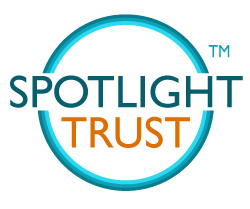
“Trust is the glue that bonds great people, processes, and environments, and ensures long-term success. If this critical component is missing, everything else falls apart.”
– Rita Bailey
When trust is high, we often take it for granted and don’t realize the crucial role it’s playing as the glue, lubricant, and accelerant across all our relationships, organizations, and communities.
What is it like to work in your organization? How is your organization performing? What percentage of your time is focused on the real work? Do things consistently get done on time and on budget to high standards? How collaborative is your culture? How would you describe the energy? What is innovation like? How do you navigate decision-making? What is your organization’s view on risk? What are meetings like? Are employees empowered and engaged? Are employees anxious? Are customers engaged and loyal? How well are people across your organization able to define and execute on strategy? Do people know what the organization’s priorities are?
All these questions point to a common denominator: trust.
Leaders play a crucial role in creating and nurturing high trust cultures, the cornerstone to thriving organizations. Here are 10 reasons to invest in developing and sustaining a high-trust organization.
10 reasons to invest in developing and sustaining a high-trust organization
10. Trust enables organizations to do work better and make better work.
“Creating a high trust culture is exactly where being a positive force for good and high performance coincides. Trust cannot be ignored by any leader because without it there is no leadership.”
– Andrea Reibmayr
By building trust, leaders can really unleash their teams to do what they’re best at and deliver results. The most trusted companies outperform the S&P by over 25% on average and over the long term.
9. Trust is a springboard to a positive organizational culture.
“Lack of trust within an organization saps its energy, fosters a climate of suspicion and second-guessing, completely devastates teamwork and replaces it with internal politics. The end result is low morale and the consequent low standards of performance.”
– Koh Boon Hwee
When trust is low, there are often violated expectations for which people try to make excuses instead of focusing on performance. There is an abundance of watercooler talk and “meetings after the meetings” to discuss the many “undiscussables.”
By building trust, organizations are developing a culture that supports real connection, communication, contribution, and collaboration. People feel safe enough to show up as themselves, to talk straight, to share their perspectives and ideas, and to do their best work.
8. Trust paves the raceway to success – and it’s a cheaper route too!
“With high trust, success comes faster, better, and at lower cost.”
– David Neeleman
In his book The Speed of Trust, Stephen M.R. Covey discusses the high cost of low trust, a steep tax for organizations to pay whether it comes in the form of navigating bureaucracy, redundancy, waste, dishonesty, disengagement, squandered time, office politics, unproductive meetings, incompetence, mediocrity, interdepartmental conflict, union conflict, policies and procedures, customer churn, employee turnover, fraud, and much more.
Leaders who prioritize cultivating trust enjoy a shorter and better journey to better results and greater impact.
7. Trust enrolls teams on the path forward.
“People follow leaders by choice. Without trust, at best you get compliance.”
– Jesse Lyn Stoner
Authority encourages conformity, not enrollment. When people are enrolled, they’re vested in the journey and eager to help you get to the destination. Enrollment allows leaders to lead and not simply manage. Enrollment creates the conditions for followers to engage and contribute – and to want to do so and know they are valued for doing so.
Enrollment happens when there is trust. People at high-trust companies are enrolled and report: 50% higher productivity, 76% more engagement, 40% less burnout, 106% more energy at work, 74% less stress, 13% fewer sick days, and 29% more satisfaction with their lives.
6. Trust is the bedrock on which reputation and value are built.
“Trust is a key building block in the creation of a company’s reputation, and as a result, its shareholder value.”
– Robert Eckert
Credibility is one of the Five Facets of Trust-Centered Leadership. Without credibility, a trusted reputation cannot be established. Interestingly, it’s been said that executives have two jobs: (1) to grow revenue and (2) protect reputation.
Reputation isn’t about PR and marketing. Today, a company’s reputation is built through consistent action: a company delivers on its promises, it treats its customers well, it takes care of its employees, it builds great products, it’s socially responsible. These actions set expectations with shareholders (and stakeholders). By consistently meeting and exceeding these expectations, the company builds trust with them.
5. Trust is the foundation for a brand.
“In life and business, relationships are important – but they are empty unless they are established and based upon trust. Trust is the fundamental building block for a brand, and it is the glue for any lasting relationship.”
– Horst H. Schulze
Trust is a critical strategic asset for a brand. A brand is a promise. PWC’s Global Insights Survey 2018 found that more than one in three (35%) consumers ranked ‘trust in the brand’ as among the top three reasons, other than price, that influence their decision to shop at a particular retailer. Moreover, when customers trust a brand, they’re more likely to become advocates. By building trust, leaders can build a relevant and lasting brand.
4. Trust is the prerequisite to customer engagement and loyalty.
“Without customers’ trust, the rest doesn’t matter.”
– Ram Charan
Every interaction a company has with a customer influences whether or not they buy, and if they do whether or not they will return, and the story they tell others about their experience. A number of variables influence customer engagement and loyalty, and customer trust has been found to be a higher order mediating variable that enhances the impact of corporate identity, corporate image, and the reputation of a company on customer loyalty.
3. Trust catalyzes collaboration and innovation.
“Building a foundation of trust has lasting benefit, long beyond the team building experience. Trust leads to cohesion, cohesion leads to an environment where team members are willing to take a chance with their ideas and suggestions.”
– Eriq Powers
There is a strong relationship between collaboration, innovation, and trust. Collaboration and innovation involve risk both for the organizations running the process and for the individuals participating in it. Collaboration is facilitated and innovation is unleashed when people trust that they can take reasonable risks and share ideas without fear in a context where they are supported by their peers to do so.
2. Trust is a competitive advantage.
“Highly successful performers in business and in sports show a level of trust and understanding that separates them from their competition.”
– Pete Carroll
From culture, to brand, to speed, to effectiveness, to agility, to customer engagement, to collaboration, to innovation – trust is the one thing that changes everything and helps organizations stand out from the competition across the board. Trust is an upstream, mission-critical area that organizations can develop to level-up their game on all fronts.
1. Trust opens the door to unparalleled possibilities.
“If we can learn to trust one another more, we can have unprecedented human progress.”
– Frances Frei
Our world is changing, fast. To successfully navigate this change, we need to change – as leaders and as organizations.
While power, authority, or brute force can lead to change, they’re not sustainable approaches that respect and value those involved in the process.
Meaningful and lasting change happens when people feel safe enough to talk about a different and possibly better version of their future. Change happens when they feel seen by the people that they’re speaking with this about. Change happens when they see that they belong and play a role in that version of the future. Change happens when they feel encouraged to be audacious and brave, and that it’s okay to try things that haven’t been done before and possibly make mistakes along the way.
Change happens when there is trust. Trust is transformative. It’s the defining theme of our time.
Trust is an ongoing practice
Trust is not a light switch we can turn on as needed. It’s a valuable and fragile asset we need to continue to nurture and strengthen over time. Trust is also an infinite game, something that is better when it’s shared, not scarce.
Underpinning all these reasons to develop and sustain a high-trust organization are practical actions, skills, and competencies that can be learned and practiced.
Which of the reasons above resonate the most with you and why? Or perhaps you’re thinking of a reason not mentioned in these ten? If so, we’d love to know what it is.
Whether you feel trust is high or low at your organization, what practical actions are you taking to develop trust as a shared asset?
Trusted resources
If you’re looking for some ideas, check out our resources to develop your Trust-Centered Leadership skills
- Get your FREE Building Trust at Scale Playbook which includes five high-impact sections to help you unleash your people and your full business potential.
- Join one of our FREE virtual workshops and walk away with Trust-Centered™ skills you can put into practice right away.
- Register for a Superclass for deeper dive training in a robust repertoire of Trust-Centered™ leadership skills.

